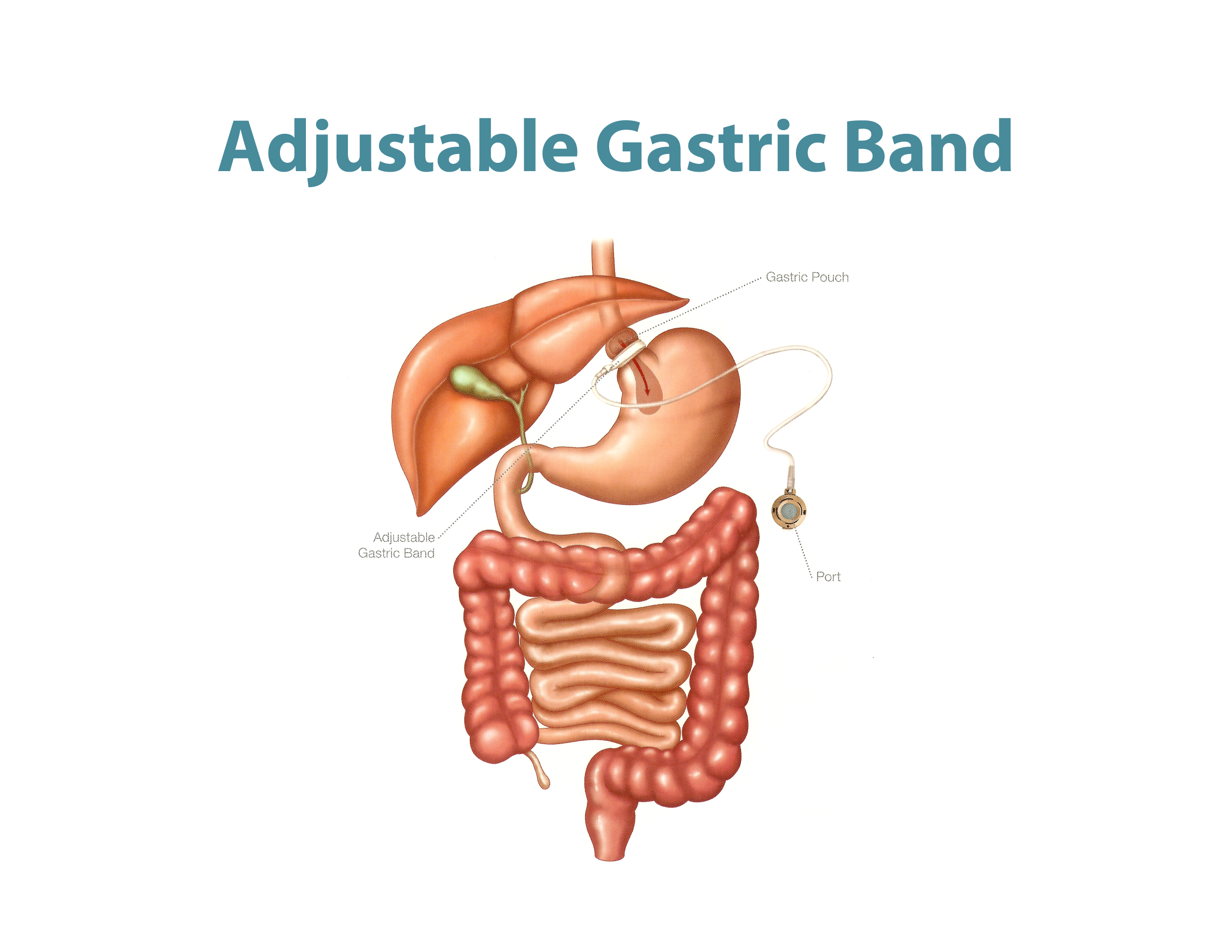
In this operation, an adjustable band is placed surgically at the top of the stomach to control the volume of food ingested. This band is connected via tubing to an Access Port that is surgically placed under the skin at the time of the operation. This port can be accessed via special needles to add or remove fluid, to ultimately increase or decrease the band size around the stomach, thus decreasing or increasing the volume of food ingested.
The patient should expect to lose about 40-50% of her/his excess weight on average. Weight loss is slow, but can be maximized with following diet instructions and exercise. The results vary significantly. Some can obtain amazing results that sometimes exceed or are comparable to other procedures if they were responders to surgery coupled with the secret to its success.
The secret to success with the band is: a strong patient will to continue to diet after surgery, not relying on the band itself to tell her/him how much to eat, and continuing to follow up with the surgeon to adjust the band, taking away the individual hunger feeling and providing her/him with the important sensation of satiety. Adding daily exercise regimen is of utmost importance as well.
Having said the above, it does have the highest rate of weight regain or inadequate weight loss between the different surgical options, up to 50%. Minority of patients the band just does not work for them.
The band is a safe surgical procedure. Immediate peri-operative complications are rare, and <0.0 1 % are related to technical issues of injuring the Stomach or the Esophagus at the time of surgery. Other immediate complications are related to the patient health status and general anesthesia.
The main issue with the adjustable band is the long-term complications which are commonly not serious, but are rarely devastating. However, the longest term published studies suggest a long-term complication rate of up to 60% of patients:
- Complications related to the Access Port: May need to be repositioned or exchanged with time.
- Band tubing: may disconnect form the Access Port and has to be reconnected again through a laparoscopic operation.
- The Band itself: may stop working, may slip from its fixed position causing complete obstruction of the stomach. Both require operations, to exchange or reposition the band itself. The operations can be done laparoscopically.
Thankfully, the most serious complications are less common. But unfortunately their incidence increase with time. The more you have the band in, the higher the chance these will occur. Up to one third of patients, can experience these problems. The two most serious are:
- Band Erosion: partial or complete migration of the band inside the stomach. The symptoms of such a problem are loss of food restriction, with ability to eat more, and a surprising Access Port site infection. This complication needs complete removal of the band, this can be done endoscopically if the expertise and equipment are available or laparoscopically.
- Esophageal Dilatation with loss of its contractions (Peristalsis): This is the most serious and devastating complications and thankfully the least common. It can cause difficulty swallowing food sometimes despite a completely deflated band. Most of the time, it responds to complete band removal, but occasionally it does not, which may require further interventions at that time.
These complications usually occur in patients who have lost follow up. They can be prevented or anticipated with regular follow up to assess the patients symptoms, regulate the size of the band, and obtain a Barium Swallow (X-rays) to determine the band position, size of the esophagus and the efficiency of its contractions.That is why LONG-TERM FOLLOW UP IS OF UTMOST IMPORTANCE.
Regular deflation of the band for one month per year may help. However, patients will eat more and may gain weight during this time, especially knowing that gastric banding increases the level of the hunger hormone, thus when deflated patients at times will eat without control
All in all, band patients require additional procedures in their lifetime in 50-60% of the time.

